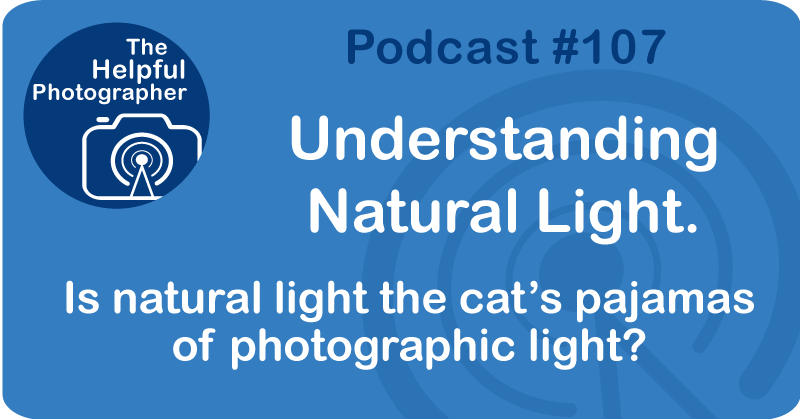Understanding Natural Light #107
Understanding Natural Light #107

So often I hear photographers drone on and on about natural light, about how beautiful it is and how they use natural light to get that shot, and so on and so on. And then there are those who go on about the morning light. As a result, I'm often asked how to capitalize on that natural light. So here we go. What you need to know about light is this. Light is light. All and I mean all light is the same. The quality or the look of the light can be changed if you understand how to manipulate or bend the light. And yes, light can be bent. No matter the light source, with a little out of the box thinking, we can change how it looks. Think about it this way. Many will tell you never to shoot in the middle of the day because the light is crap, right? So why is it crap? Mostly because it's really harsh. But isn't that also natural light?
So how can it be argued that natural light is better than studio light, right? Don't forget that nearly 100% of commercial photography is shot with artificial lights. What I think can be argued is that certain qualities of light might be more desirable than others. Most of the time, the quality of light that we like is very, very soft. But lately, I've been seeing lots of images with really harsh light, and they're pretty cool too. Just look at Mark Weiss's images at markweissphotography.com. Some of his product work has really harsh light and they look fantastic. So why is it that you're getting bad results from your studio lights or your on-camera flash? I hate to say it, but if you're not getting that beautiful soft light the professionals are getting, it's because you lack the skill to manipulate the light the way you want it to. That's why we're professionals. So clearly how you handle the light makes that image great or not so great. And if you don't have the light quality you want you can with ease or difficulty, depending on the source of the light, change the quality of the light. But it's up to you to fix that. And to be clear, you can also change the quality of natural light. Movie makers do it all the time. It's really quite simple, but at the same time I understand it's not. But here's a good example: the next time you're outside in the middle of the day with no clouds and the light is really harsh, simply step under a tree or into the shade and look at how the quality of light changes.
My fundamental problem with shooting products or people in natural light is that you can't keep the same quality of light for long periods of time because the source of the light, you know, the sun keeps moving and then there are those pesky clouds that come and go as they please. My point is that using natural light will not solve all of your lighting woes. The other thing I've noticed is the oooing and awing over the light that happens at the golden hour. The golden hour is the hour before the sun sets, and this light is often a bit softer and has a nice yellow color to it. I must agree that the light at golden hour is really beautiful. But so are flowers, and I see terrible shots of flowers all the time. So although it helps to have beautiful light, and beautiful light can make an average scene better or an already beautiful scene incredible, you still have to compose the shot.
Photographers go on and on about the light this and the light that, but just pointing your camera at a beautiful flower without regard for composition doesn't work. Pointing your camera where there is beautiful light will also not work. The light and the composition must work together. So natural light can be great and produce great results, but there's more to it than that. You still have to see the good light and you still have to compose around it. I hope that was helpful.










